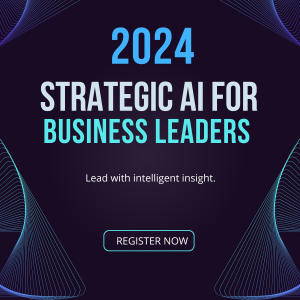AI GLOSSARY - C
Definition: The process in machine learning where an AI model is trained to assign labels to objects or instances based on their features, such as distinguishing between different types of animals in photos.
Definition: A type of unsupervised learning technique used to group sets of objects in such a way that objects in the same group (called a cluster) are more similar to each other than to those in other groups.
Definition: A deep learning algorithm which can take in an input image, assign importance to various aspects/objects in the image, and be able to differentiate one from the other. Widely used in image and video recognition.
Definition: A technique for evaluating ML models by training several ML models on subsets of the available input data and evaluating them on the complementary subset of the data.
Definition: A subfield of AI that strives for natural, human-like interaction with machines. It uses self-learning algorithms that use data mining, pattern recognition, and natural language processing to mimic the way the human brain works.
Definition: A software application used to conduct an online chat conversation via text or text-to-speech, in lieu of providing direct contact with a live human agent. Designed to convincingly simulate the way a human would behave as a conversational partner.
Definition: A type of neural network that uses groups of neurons (capsules) to identify and keep track of objects across different perspectives and orientations, potentially improving the robustness and accuracy of image recognition.
Definition: An equation used in AI to measure how well the model performs relative to its objectives. The goal is usually to minimise this cost or loss by tweaking the model’s parameters.
Definition: A parallel computing platform and application programming interface (API) model created by NVIDIA. It allows software developers to use a CUDA-enabled graphics processing unit (GPU) for general purpose processing.
Definition: A type of learning in which AI models are trained in a way that starts with easier tasks or information and gradually increases in complexity, similar to the way humans learn.
Definition: The process of determining whether one thing influences another within a system, based on observed data and its statistical relationships.
Definition: A form of computing that anticipates users’ needs and automatically adjusts itself to deliver relevant information based on the context of the interaction.
Definition: A technique used by recommender systems to predict a user’s preferences based on the preferences of other users. It is commonly used in streaming services to recommend movies, music, or products.
Definition: The study of using computer algorithms to process and analyse large amounts of natural language data.
Definition: A field of artificial intelligence that trains computers to interpret and understand the visual world. Machines can accurately identify and locate objects then react to what they “see” using digital images from cameras, videos, and deep learning models.
Definition: Robots equipped with AI that mimics the human brain, enabling them to understand their environment on a more complex level and perform tasks requiring decision making and problem-solving skills.
Definition: In the context of AI, a range of values that estimates the uncertainty around measure like a model’s accuracy. It gives an upper and lower limit between which the true value is expected to lie.
Definition: A learning model in AI where the system continually learns from data as it becomes available, without being explicitly reprogrammed. This is essential for applications that require real-time decision-making.
Definition: An AI system designed to help people manage their daily tasks or make decisions by providing recommendations based on data-driven insights.
Definition: An AI’s ability to make presumptions about the type, properties, and other aspects of everyday objects and actions, similar to human common sense.
Definition: The study of how systems, such as networks of neurons in biological organisms, process information and communicate through feedback mechanisms.
.
Definition: A technique in machine learning that involves the use of two generative adversarial networks (GANs) together with the goal of learning to transform data from one domain into another without paired examples.
.
Definition: The practice of obtaining input or information from a large number of people, typically via the Internet, used in AI to gather large datasets.
.
Definition: Systems composed of interconnected parts that as a whole exhibit one or more properties (behaviour among the properties) not obvious from the properties of the individual parts.
Definition: In the context of AI, a compiler is a special program that translates code written in one programming language into another language or into machine code that computers can execute. This is essential for developing efficient AI applications that run on various platforms.




